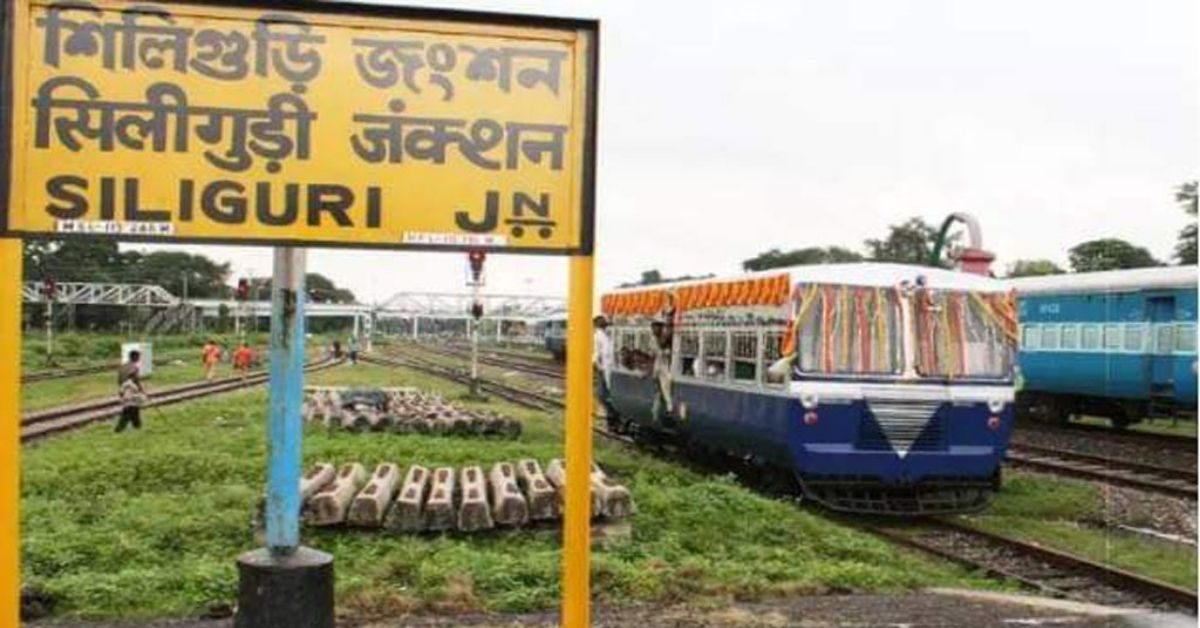India plans to transform Siliguri — the gateway to the North Eastern Region of India — into an international trade hub, which can potentially hurt Bangladesh in terms of trade connectivity.
Siliguri is connected by Indian national highways to four border points — Panitanki (Nepal), Jaigaon (Bhutan), and Fulbari and Changrabandha (Bangladesh). Given its proximity to multiple neighbouring countries, the location was identified as a key aggregation point by the Indian government, according to a report published by the Asian Development Bank (ADB).
The report states that a multimodal (road- and rail-based) inland customs and clearance depot (ICD) has been developed in Siliguri, which caters to Bangladesh, Bhutan and Nepal. The terminal is located next to the New Jalpaiguri railway station near India’s National Highway No 31D. The Asian Highway 2, which connects Bangladesh, India and Nepal, is adjacent to the site and the Asian Highway 48 connecting Bhutan, India and Bangladesh is about 45km from the site.
Under the Bangladesh-Bhutan-India-Nepal Motor Vehicles Agreement (BBIN-MVA), Siliguri will be a key point of the South Asian road network. Siliguri is also part of the Asian Highway Network, which is supposed to connect the BBIN countries with Thailand and Myanmar through Bangladesh.
Dr Khondaker Golam Moazzem, regional connectivity expert and research director at the Centre for Policy Dialogue (CPD), said: “The original plan was that Myanmar and Thailand would be connected to India, Nepal and Bhutan through Bangladesh under the Asian Highway Network, which may be hampered as India has drawn up an alternative road network.
“This network will connect Myanmar and Thailand to Northeast India [Assam, Meghalaya, Tripura and Mizoram] through Siliguri, circumventing Bangladesh.”
Such a measure would harm the prospects of Chittagong and Mongla ports as well, he told Dhaka Tribune.
“Kolkata port will be more vibrant once the Siliguri ICD is fully operational due to the direct connectivity between Siliguri and the road and rail network. Moreover, the ICD can be a boon to Pakistani and Afghan traders through the use of Kolkata port as well,” said Dr Moazzem.
Meanwhile, a member of the Thematic Group on Regional Connectivity of the Road Transport and Bridges Ministry said work on the Asian Highway was underway according to the original plan.
Any alternative routes that went through Indian states to connect Myanmar would be costlier for international traders, he said, wishing to remain anonymous.
“Traders must opt for a comparatively time- and cost-effective road network,” he added.
Rail network
According to the ADB report, the Siliguri ICD has a rail-handling area of 35,000 square metres, with two handling railway lines.
On August 1, the Haldibari (West Bengal)-Chilahati (Bangladesh) railway corridor was revived after 55 years to bolster trade among the South-Asian countries through using the Siliguri ICD.
The distance between Haldibari Railway Station and the international border is 4.5km, while that of Chilahati and the zero point is around 7.5km.
At the opening ceremony of the restored rail link, Northeast Frontier Railway Chief Public Relations Officer Subhanan Chanda said the route would ensure less time for transit of goods to Bangladesh from Assam, West Bengal, Nepal and Bhutan as part of the Kolkata-Siliguri main line.
Apart from this, India and Bangladesh had also announced a train service, covering a distance of 513km between India’s New Jalpaiguri and Dhaka. The service was scheduled to start from March 26, 2021, the day Bangladesh launched the golden jubilee celebrations of its independence, but it was halted due to the Covid-19 pandemic.
Source : Dhaka Tribune








